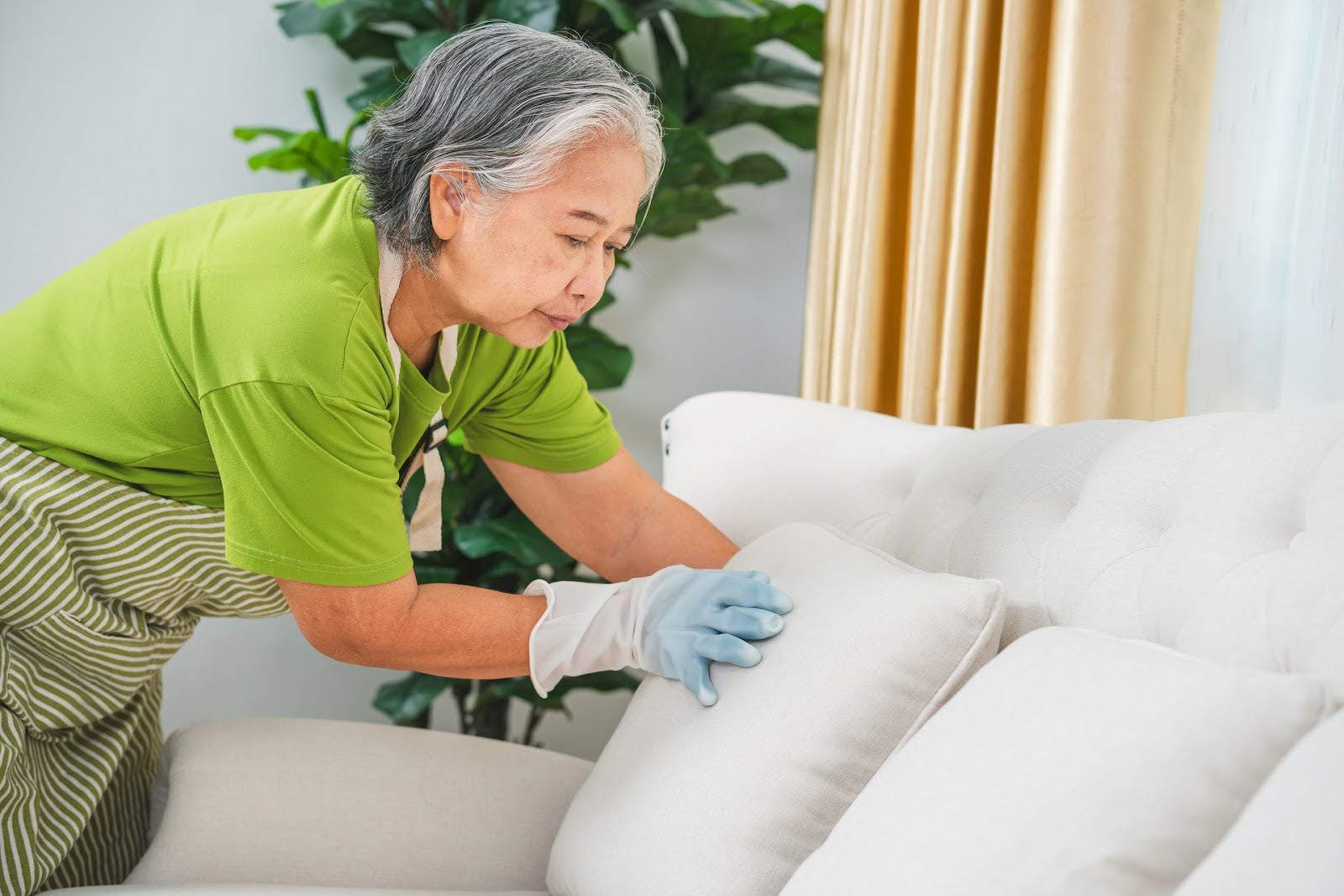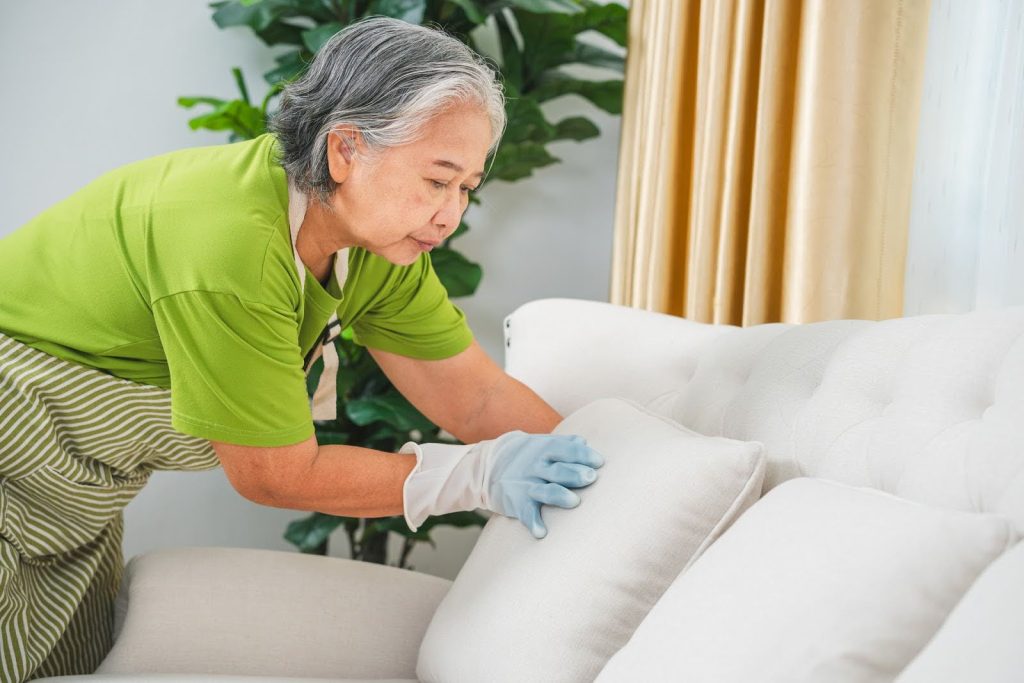Do you need to remove upholstery stains fast? From coffee spills to pet accidents, this guide covers it all. Learn practical and effective steps to tackle different stains and keep your furniture looking fresh.
- Key Takeaways: Remove Upholstery Stains
- Effective Methods to Remove Common Upholstery Stains
- Care for Delicate Fabrics
- Prevent Future Stains
- Why Professional Help to Remove Upholstery Stains
- Megerian Rugs and Carpet Cleaning: Expert Upholstery Stain Removal
- Summary
-
FAQs About How To Remove Upholstery Stains
- How often should I vacuum my upholstery?
- What should I do if I spill coffee on my sofa?
- Can I use water-based cleaning solutions on all fabrics?
- How can I prevent future stains on my upholstery?
- Can baking soda effectively remove stains from upholstery?
- How do I handle red wine stains on delicate fabrics?
- What are some natural alternatives to commercial cleaning solutions?
- Why should I hire professional upholstery cleaners?
- To Learn More or Request A Free Estimate
Key Takeaways: Remove Upholstery Stains
- Regular vacuuming and identifying upholstery fabric are essential steps for effective stain removal.
- Immediate blotting of fresh stains, along with the use of gentle, appropriate cleaning solutions, significantly enhances cleaning success.
- Professional upholstery cleaning services offer advanced techniques for deep cleaning and preserving the quality of fabrics over time.
Start with a Thorough Vacuuming
When upholstery cleaning, the first and foremost action is meticulous vacuuming. This initial step prevents dirt from accumulating and uncovers the true extent of stains, thus making subsequent cleaning endeavors easier. A vacuum equipped with a soft brush attachment is essential, as it carefully extracts dust and particles while safeguarding your furniture’s delicate surface.
According to John D. Megerian of Megerian Rugs and Carpet Cleaning in Long Island, NY, you should institute a weekly vacuuming routine to ensure your upholstery maintains its prime condition. This practice extends the effectiveness of fabric protectors and keeps your furnishings looking spotless and inviting. By consistently eliminating superficial grime, you minimize the chances of stubborn stains becoming deeply ingrained in the material, amplifying future stain extraction processes.
Ensuring that effective stain removal begins by preparing a clean base is essential. Kick off this process by dedicating time to thorough pre-cleaning before diving into specific techniques to eradicate those persistent stains.
Identify Upholstery Fabric and Cleaning Codes
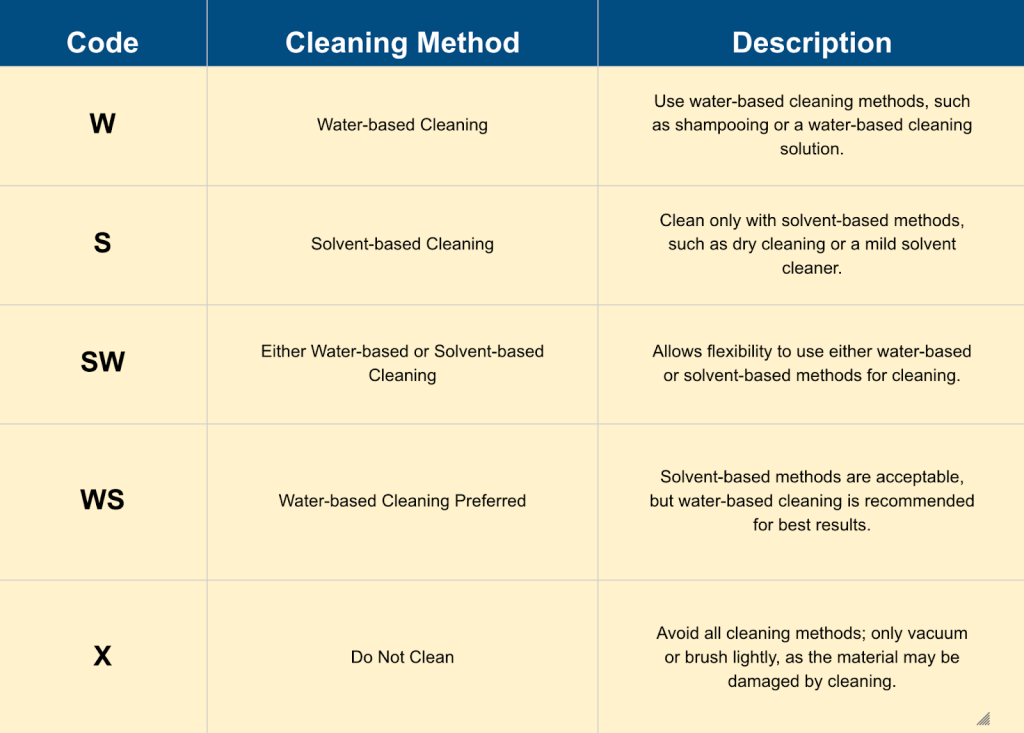
For successful upholstery cleaning, it is essential to identify the type of fabric on your upholstered furniture. Upholstery cleaning codes indicate the correct cleaning method, typically found on a tag providing care instructions for the furniture. A ‘W’ code signifies that water-based solutions can be safely applied, while an ‘S’ code means only solvent-based cleaners should be used to avoid harming the material.
If you encounter an ‘S/W’ label on your fabrics, it suggests that both solvent-based and water-based products may be appropriate. Exercise caution during application. On items tagged with an ‘X,’ refrain from using wet or dry-cleaning methods—these materials only require vacuuming or light brushing. To protect against damage, confirm with the fabric care tag before proceeding with any specific treatment.
Before fully applying a particular technique to any piece of upholstered furniture, a discreet spot test is advisable to confirm that no harmful reactions occur due to the chosen solution. This precautionary measure could prevent unwanted incidents and ensure efficient and safe maintenance for your furnishings’ cleanliness.
Blot Fresh Stains Immediately
Address a spill immediately to thwart the establishment of a permanent mark. Cleansing stains at once, following an initial vacuum, is pivotal for preventing them from seeping into the fabric’s weave. Such prompt attention simplifies and enhances stain eradication.
Dab away any extra moisture to confine the spread of the wet stain. Employ a dry, absorbent cloth to blot up as much liquid from the area as you can. Refrain from rubbing. Patting gently will keep the discoloration contained. Acting expeditiously when mopping up coffee spills ensures absorption before its adherence.
For mishaps involving fragile textiles such as velvet, opt for swift evaporation techniques like directing airflow via a fan or hairdryer towards it. This rapid response reduces the probability that your upholstery suffers lasting blemishment due to staining incidents.
Remove Upholstery Stains with Gentle Cleaning Solutions
Utilizing gentle cleaning agents can successfully eradicate stains while protecting your furniture coverings. Combine a mild dish soap with cool water and carefully dab at the stain on fabrics that are compatible with water. This potent yet delicate approach guarantees your furnishings remain unharmed during cleaning. Before using any cleaning mixture broadly, conduct a spot test on a hidden section to prevent undesirable effects.
When dealing with water-sensitive materials, use white vinegar or rubbing alcohol as substitutes for conventional cleaning solutions. These options have proven effective in lifting stains without subjecting the fabric to potential moisture-related harm. The crux of efficient stain removal lies in choosing an appropriate cleaner tailored to the nature of your upholstery’s material.
Tackle Tough Stains with Specialized Cleaners
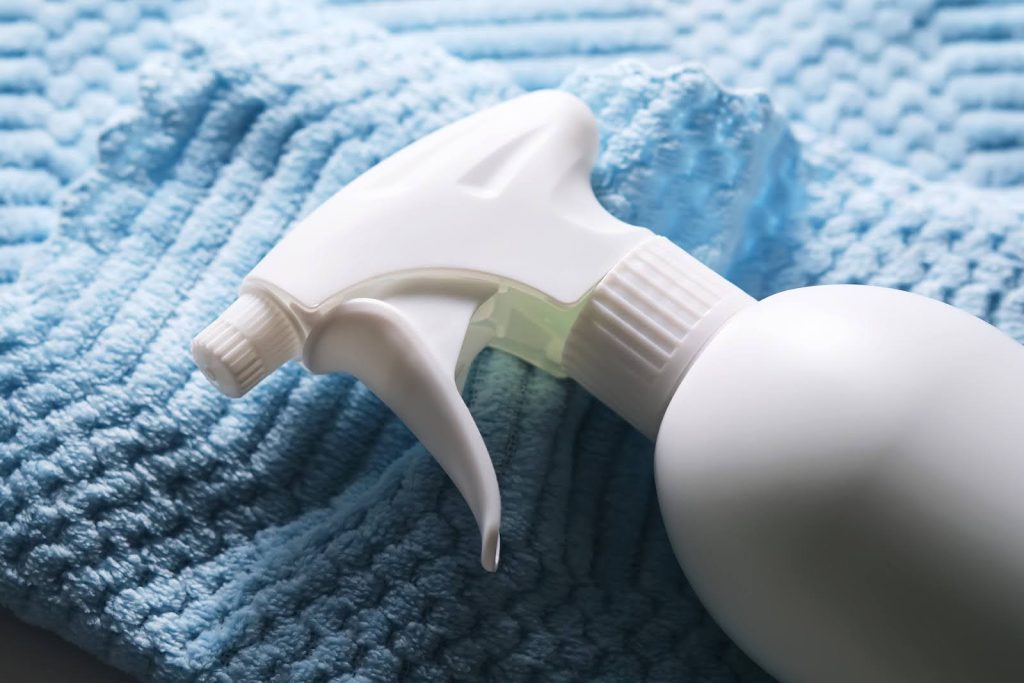
Certain stains necessitate the use of specialized cleaning products for successful removal. Such products include:
- Resolve
- Tuff Stuff
- Folex
- Wine Away
These formulas address tough stains that regular cleaning agents may fail to eliminate efficiently. To prevent any potential harm, conducting a spot test with these solvents on small areas before widespread application is recommended.
Addressing old stains embedded in upholstery can be difficult but can be managed successfully. Often, it is beneficial to treat a stubborn stain multiple times. To deal with mold and mildew on leather items, employ a blend containing equal measures of warm water and rubbing alcohol, as this concoction effectively eradicates such resistant marks without causing damage to the leather material.
Effective Methods to Remove Common Upholstery Stains
Each type of stain presents its challenges and demands particular cleaning strategies. We will explore proven methods for addressing typical stains, such as coffee, red wine, and grease, to simplify the removal process using the appropriate techniques.
How To Remove Coffee Stains from Upholstery
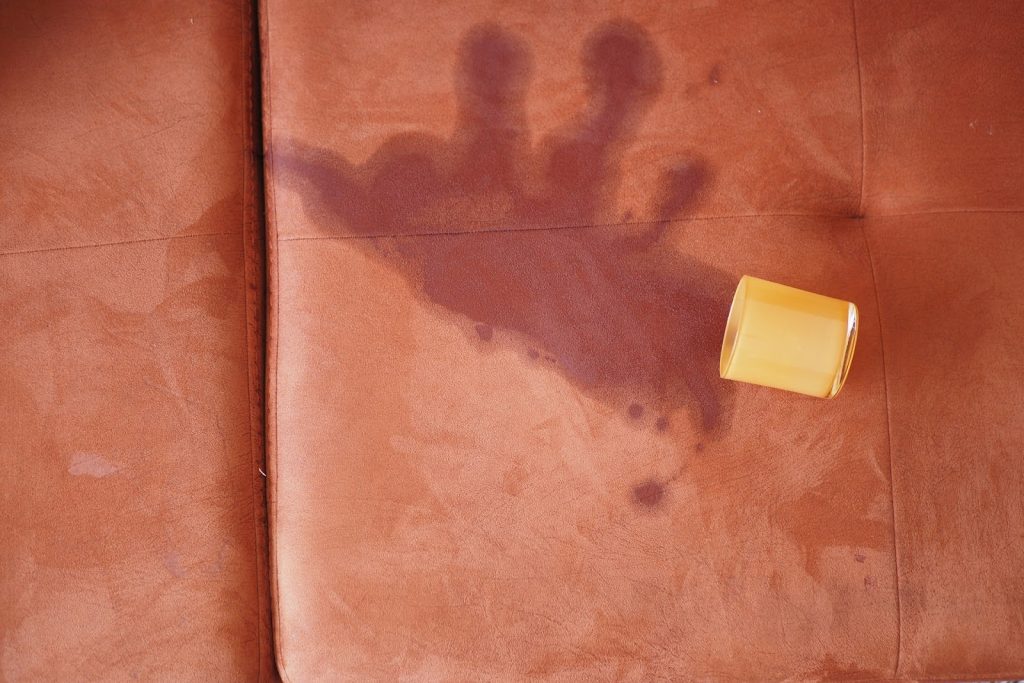
Accidental coffee spills on upholstery need not result in permanent damage. Swiftly absorbing as much of the liquid as possible with a clean cloth is critical. Then, to effectively eradicate the coffee marks, treat the stain with a concoction of dish soap and cold water. The timely dabbing helps prevent the stain from becoming established.
For successful sofa stain removal, apply a cleaning solution made of cool water and dish soap to the stained area and gently blot once again. This approach disintegrates the coffee residue, releasing it from your furniture’s fabric. Acting quickly while employing an appropriate cleaning mixture considerably enhances your chances of eliminating stains from upholstery.
How to Remove Red Wine Upholstery Stains
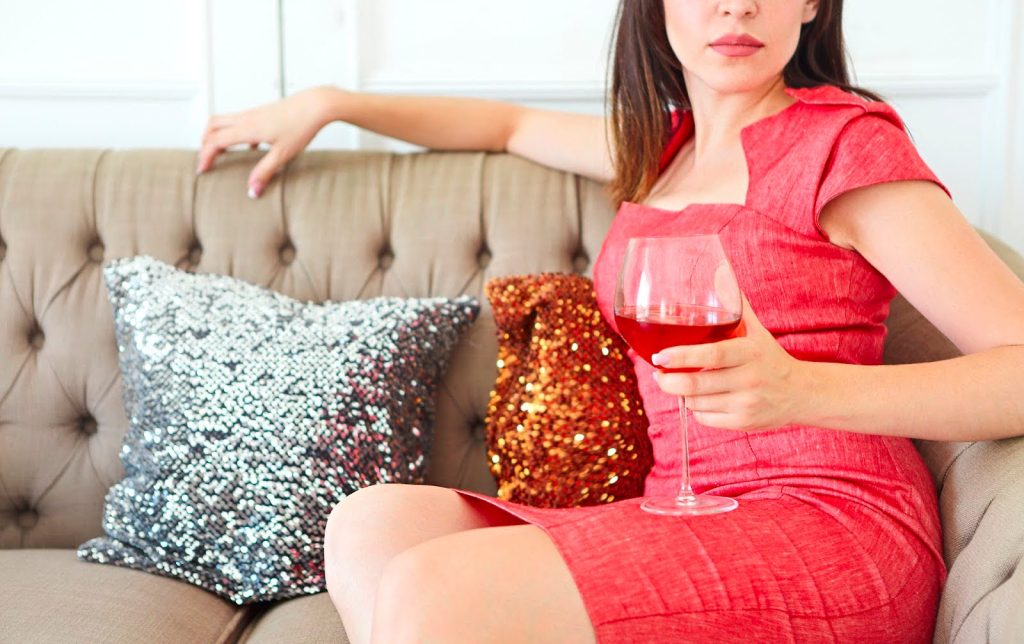
Immediate attention to red wine stains can hinder them from becoming firmly embedded in the fabric. A concoction of white vinegar, dish soap, and cool water is potent for addressing such stains on upholstery, as it disintegrates the wine particles and helps remove them.
For enhanced efficacy in eliminating these marks, pretreating with salt or baking soda to soak up the liquid before using the cleaning mixture improves stain extraction performance. When combined with white vinegar, club soda proves formidable against even resilient red wine blemishes. These approaches secure a successful eradication of challenging red wine stains.
How to Remove Grease Stains from Upholstery
Dealing with grease stains might seem challenging, but they can be effectively tackled. Begin by using an absorbent powder to soak up the excess grease. This is vital for enhancing the effectiveness of the cleaning that follows, as it helps lift off the grease and simplifies its removal.
Afterward, use a solvent-based cleaner after utilizing the absorbent powder to eliminate lingering greasy remnants. This dual-stage tactic thoroughly eradicates those pesky stains without leaving residue behind.
Adhering to these procedures will ensure your fabrics are kept pristine and devoid of unsightly greasy marks.
Removing Pet Hair from Upholstered Furniture
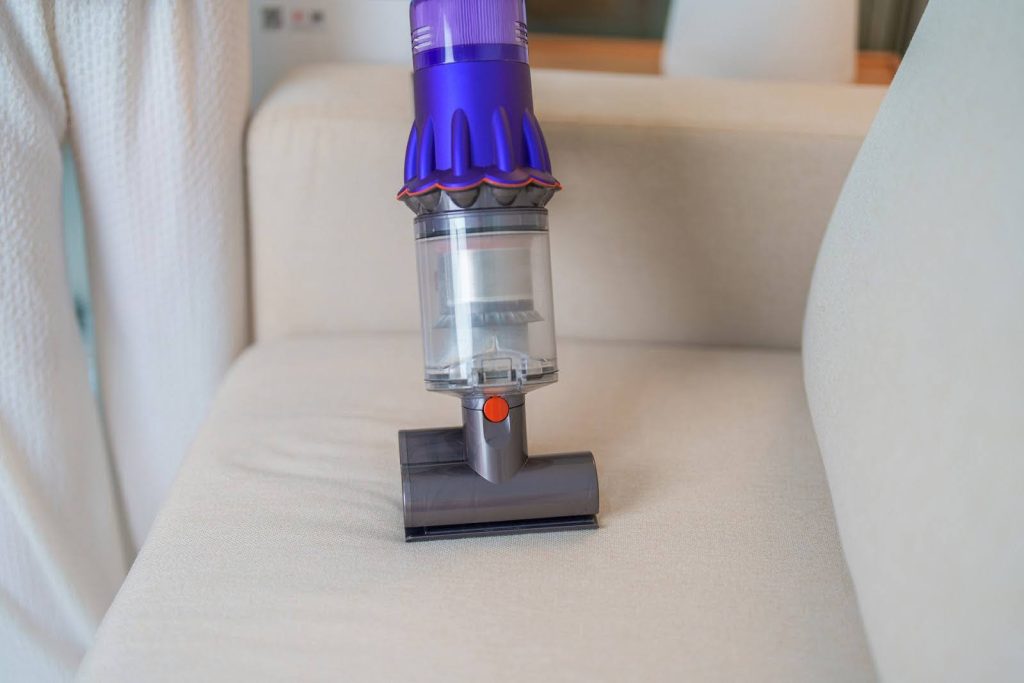
Maintaining upholstered furniture without a trace of pet fur can be challenging for those with furry companions. To remove this hair, lightly moisten rubber gloves and pass them over the upholstery. The static will cause hairs to cling to the gloves. Alternatively, a dry rubber glove can also effectively gather loose strands.
Investing in dedicated brushes for furniture or hand-held vacuums specifically geared toward collecting pet hair is beneficial. These tools are adept at picking up animal fur from your furnishings while ensuring the fabric remains unscathed. A lint roller also comes in handy by aiding in dust removal and additional de-furring of treated surfaces.
Keeping on top of this task ensures hygienic surroundings and helps extend the life of your upholstered items. Consistent cleaning efforts will keep your furniture fresh, cozy, and welcoming for all who use it.
Care for Delicate Fabrics
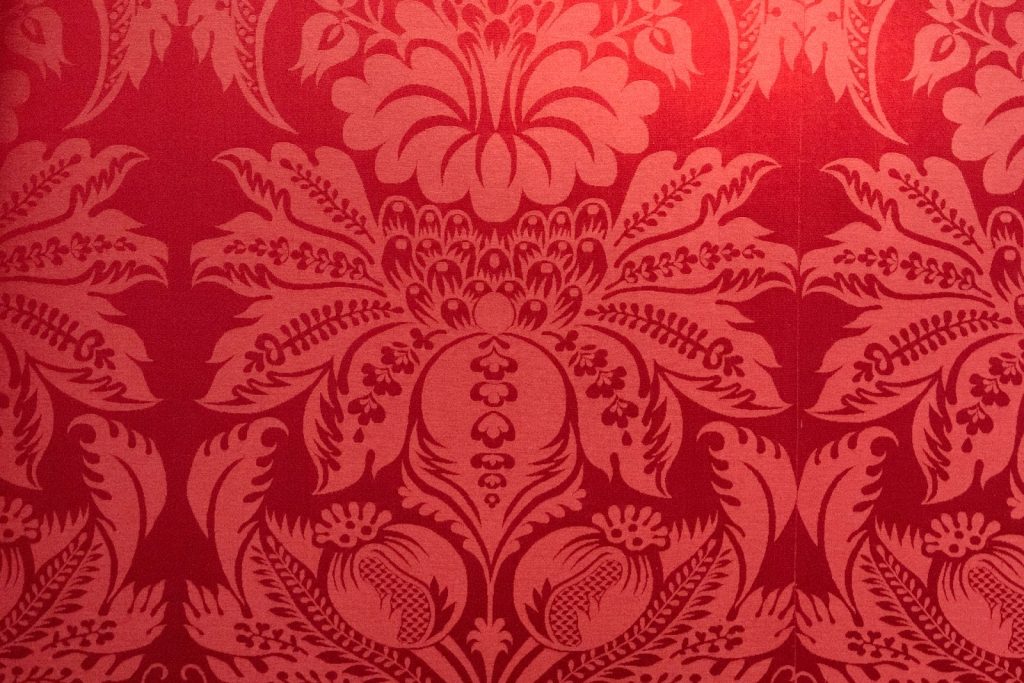
To prevent harm to the nap while cleaning velvet, it is essential to handle it delicately and utilize only a small amount of moisture. This will maintain the fabric’s texture and visual appeal.
When addressing stains on sensitive materials such as silk and other delicate fabrics, a dry powder solution helps sidestep issues caused by water exposure. Utilizing gentle care practices alongside appropriate cleaning agents will help keep your fragile upholstery pristine, preserving its elegance and integrity.
Prevent Future Stains
Prevention is better than cure, especially for upholstery stains. Fabric protectors like Scotchgard prevent spills and stains from settling into the upholstery. Manufacturers or homeowners can apply these protectors after checking compatibility.
Reapply fabric protectors annually to maintain effectiveness. This proactive step significantly reduces stain risk and prolongs upholstery life.
Why Professional Help to Remove Upholstery Stains
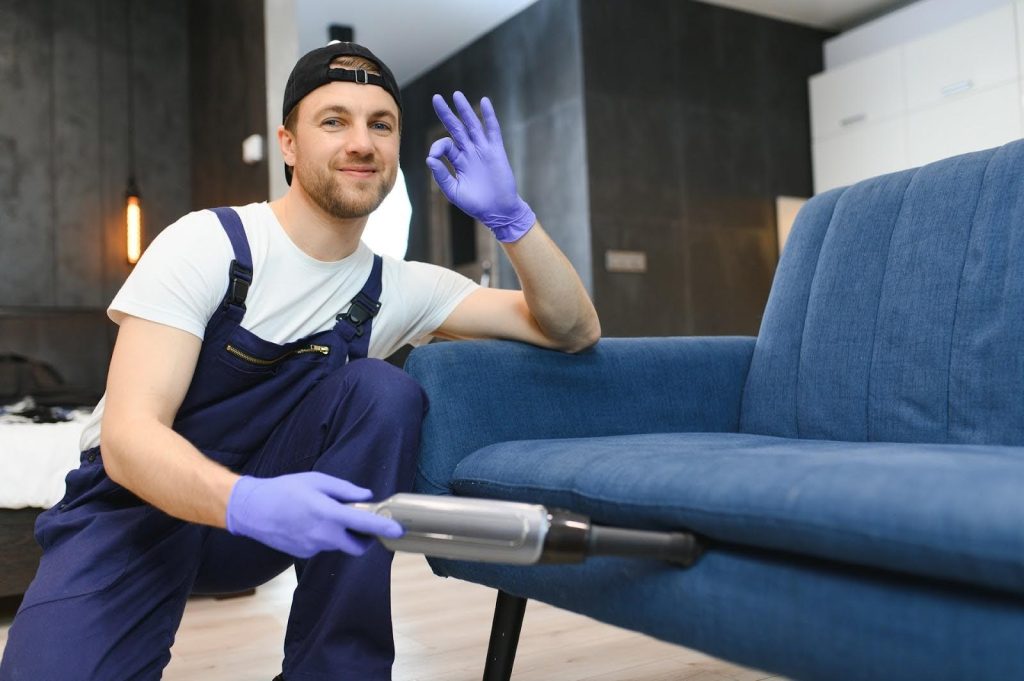
Expert cleaners provide meticulous care and upkeep for your upholstery, extending its longevity. They employ sophisticated cleaning techniques to eradicate stubborn stains and allergens efficiently. Firms like Megerian are adept at comprehensive cleaning, color revival, and applying protective measures suited to different upholstery demands.
Professional cleaning enhances the visual appeal and increases the monetary value of your upholstered furnishings, including exquisite Oriental rugs. By enlisting professional services, you guarantee that your upholstery is treated optimally, ensuring it retains its excellence and attractiveness over time.
Megerian Rugs and Carpet Cleaning: Expert Upholstery Stain Removal
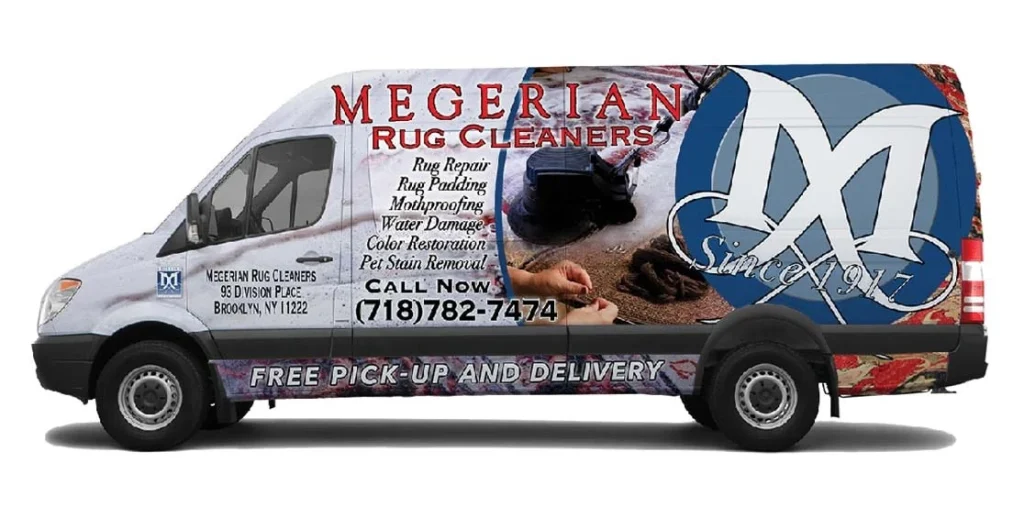
Since its inception in 1917, Megerian Rugs and Carpet Cleaning has maintained a distinguished reputation for delivering top-notch cleaning and repair services for carpets, rugs, and upholstery cleaning. Notably accomplished in antique rug care, cleaning, and repair, their team comprises well-versed technicians endowed with substantial training.
Based in Long Island, NY, Megerian’s rich heritage spans over four generations of accumulated wisdom, which they leverage to ensure that each piece receives rigorous care throughout the cleansing process.
Committed to safeguarding your valued textiles with exemplary artisanship is central to Megerian’s ethos. They aspire not just for cleanliness but also for preserving every fabric’s unique narrative across time. This is a testament to their dedication to outstanding service delivery at any hour. They stand ready as a licensed and insured provider equipped with traditional know-how reinforced by contemporary practices—thus securing optimal maintenance that upholds carpeting excellence into perpetuity.
Summary
Properly maintaining your furniture’s pristine condition is within reach with appropriate knowledge and techniques. Regular vacuuming, understanding the care codes for different fabrics, utilizing gentle cleaning agents, and employing specific cleaners are all pivotal steps in preserving your upholstery’s elegance. Conquering common stains with effective strategies, adopting helpful advice to eliminate pet hair, and paying extra attention to delicate materials help keep your furniture looking its best.
Professional cleaning services can extend your upholstery’s life span and attractiveness by offering thorough cleaning and specialized treatments tailored to individual needs. Expertise from Megerian Rugs and Carpet Cleaning ensures that valued pieces maintain their worth and visual appeal over time. Adopt these suggestions for a tidier living space filled with beautiful furnishings.
FAQs About How To Remove Upholstery Stains
How often should I vacuum my upholstery?
Vacuum your upholstery at least once a week to keep it in good condition and prevent dirt buildup.
Regular maintenance will extend the life of your upholstery and keep it looking fresh.
What should I do if I spill coffee on my sofa?
If you spill coffee on your sofa, promptly blot the area with a clean cloth to soak up the excess liquid. Then, use a mixture of dish soap and cool water to treat the stain gently. Acting quickly is essential to prevent lasting damage.
Can I use water-based cleaning solutions on all fabrics?
You cannot use water-based cleaning solutions on all fabrics; always check the fabric care tag first. A ‘W’ indicates it’s safe for water-based cleaners, while an ‘S’ means only solvent-based solutions should be used.
How can I prevent future stains on my upholstery?
To effectively prevent future stains on your upholstery, apply a fabric protector such as Scotchgard and reapply it annually to maintain its protective properties. This proactive measure will help keep your upholstery looking pristine.
These measures will significantly reduce the risk of stains and dirt buildup.
Can baking soda effectively remove stains from upholstery?
Yes, baking soda can be an effective stain remover for upholstery. It absorbs moisture and odors, making it particularly useful for dealing with wet stains and fresh spills. Sprinkle baking soda on the affected area, let it sit for 15-20 minutes, and then vacuum it up for best results.
How do I handle red wine stains on delicate fabrics?
For red wine stains on delicate fabrics, blot the stain immediately with a clean cloth to absorb as much liquid as possible. Then, gently apply a mixture of white vinegar, dish soap, and cool water. Always perform a spot test on an inconspicuous area first to ensure the cleaning solution does not harm the fabric.
What are some natural alternatives to commercial cleaning solutions?
Natural alternatives to commercial cleaning solutions include white vinegar, baking soda, and lemon juice. These can be mixed with water to create gentle cleaning solutions that effectively remove stains from upholstery without harsh chemicals. Always test on a small, hidden area first to ensure fabric compatibility.
Why should I hire professional upholstery cleaners?
Enlisting the services of expert upholstery cleaners is crucial because they employ sophisticated methods that successfully eliminate stubborn stains and allergens, thereby extending the longevity of your furniture.
These professionals provide a level of deep cleaning beyond what standard techniques can accomplish, ensuring comprehensive cleanliness.


